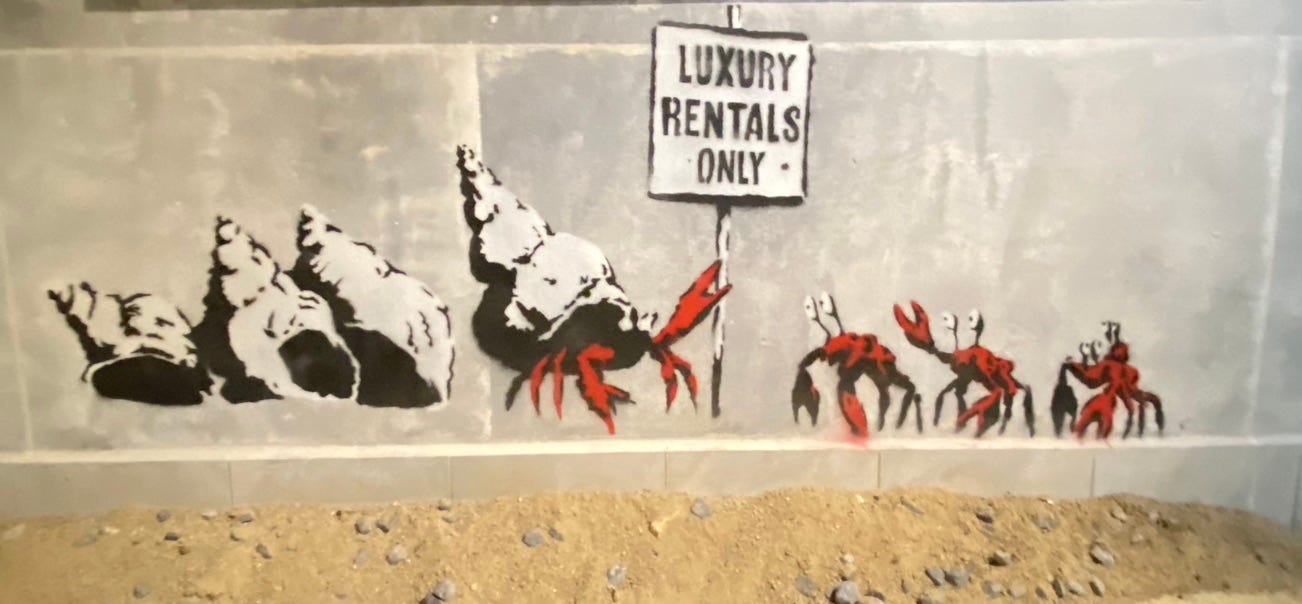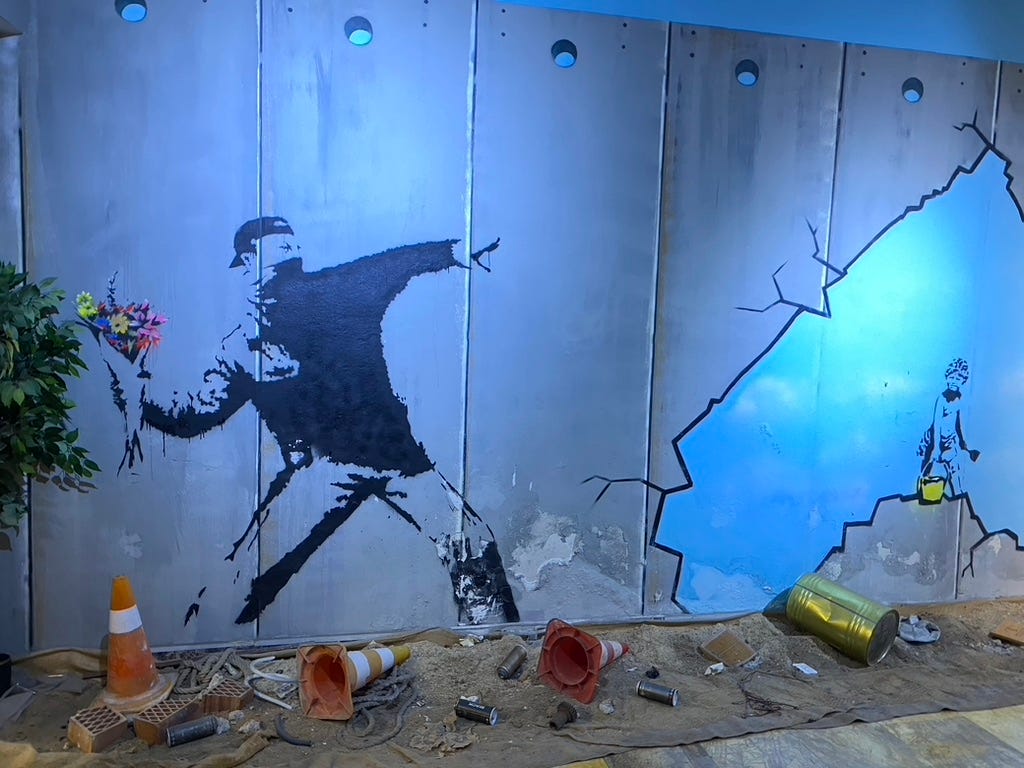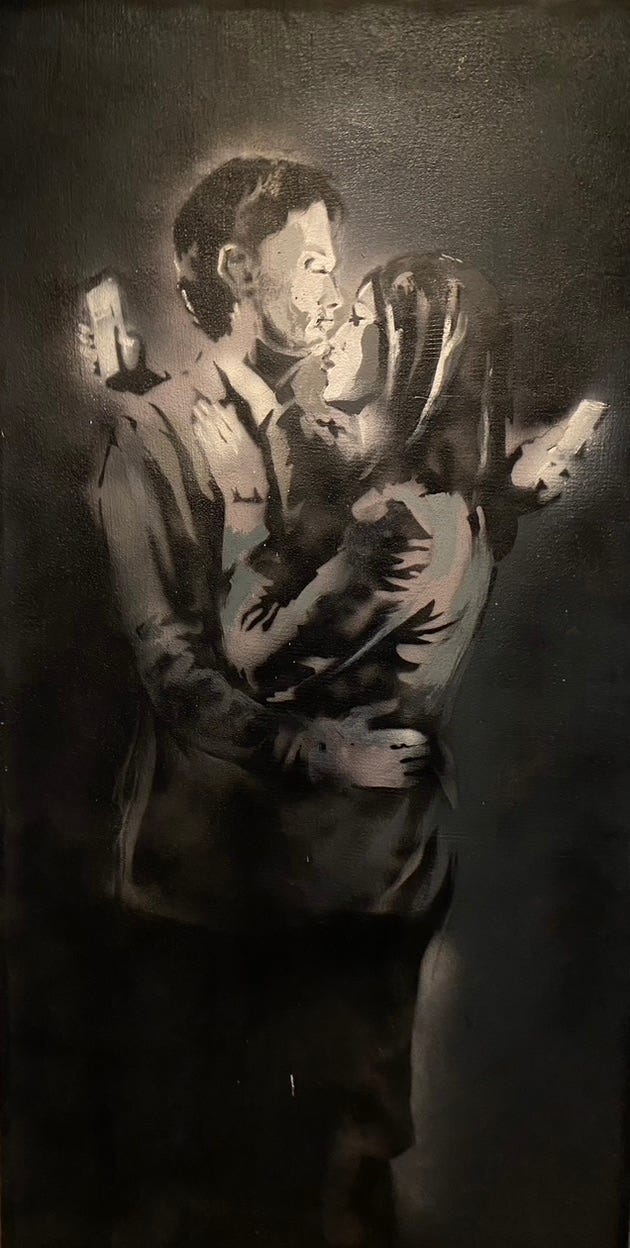Banksy's Outlandish 'Love Is In The Bin'
Banksy art is something like Bitcoin - a revolutionary medium, challenging incumbent models of thought, transaction and access, shrouded by anonymity and a provocative non-institutional social flare.
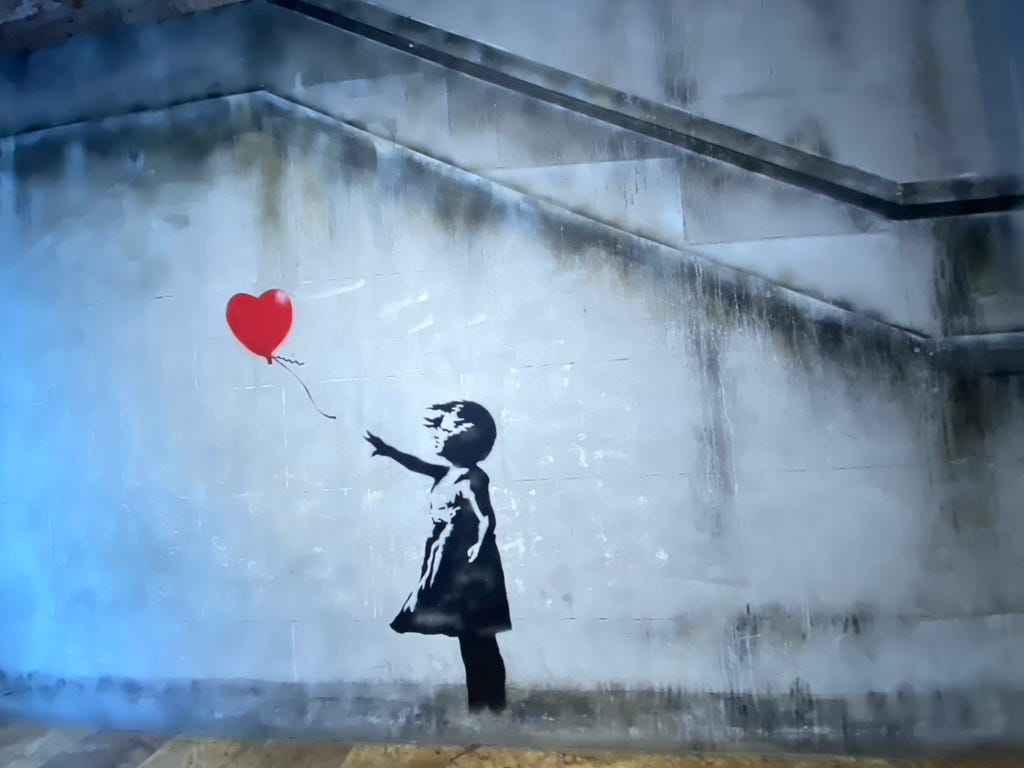
Wandering without a plan is a great way to discover things you never knew existed. That’s how I stumbled across the Banksy Museum in Barcelona in November 2024. I was walking down the street and it appeared. I’d read about Banksy ‘stenciled images’ for years but had no idea there was a museum of his work in Barcelona. Then I discovered it was one of more than a dozen Banksy Museums in the world.
There is nothing traditional about Banksy art. For starters, he encourages people to pirate his work, create replicas at will, and spread the images. He doesn’t do art shows, even though his work has hung with the Grand Masters. And at times, he has hung his own work, in clandestine infiltrations at national art galleries and museums, shocking the institutions when they discover his planted works on their curated walls.
In the Barcelona museum, all the images are copies of his original stencils, produced by local artists, but strikingly exact in portrayals, according to staff who worked there. They said all the Banksy museums are local creations.
The Barcelona museum is compact, rough, unassuming, in a three-story block house wedged between other buildings. It has scores of reproduced Banksy stenciled images and installations on display, plus videos. All the accompanying photos are from the museum, except the Sotheby’s Auction photo and Lighthouse. Walking into the museum was like discovering the tip of an iceberg.
The complexity and reach of Banksy’s art is hard to fathom in a single walk through.
Regardless of your political views, Banksy’s work is provocative, socially laser focused and stunning to comprehend in its non-traditional valuation approach to installations. He’s a street artist. He’s anonymous. His medium is based on stencil art, which is viewed as primitive by high culture artistic standards. It is temporary and can be vandalized, erased, or protected. It can also be removed, collected, or captured and sold for millions.
Who the artist is remains anonymous, though there appears to be some well informed guesses, but nothing verified. In that regard, Banksy has an underground affinity with Bitcoin creator, Satoshi, who also has never been clearly identified. And like Bitcoin, Banksy’s art poses a revolutionary change, away from traditional art venues and gallery events, and more centered on social-political impact issues, displayed on the streets, often on dilapidated buildings, remote streets, and walls. Maybe in a tunnel.
The Flower Thrower - 2002
Banksy’s signature stencil images emerged in the early 2000’s which is when I started taking notice of his work. Another of his iconic works, titled - The Flower Thrower (2002) - was originally stenciled on the wall in Jerusalem that separates Israel from Palestine, but has been reproduced in various mediums, including a later version titled - Love is in the Air - which sold for $12.9 million and was reproduced into 10,000 NFT (digital non-fungible tokens), then re-sold to individual investors, token by token.
Love Is In The Bin - 2018
One of the most striking exhibits in the Barcelona Gallery is a video clip that depicts a copy of Banksy’s iconic 2002 image, “Girl With A Balloon,” being auctioned at Sotheby’s in 2018. A large reproduction of Girl With A Balloon was stenciled in the entry hall at the Barcelona Gallery. The framed, stenciled version sold at Sotheby’s for $1.4 million. But the moment the gavel dropped on the sale, a secretly embedded paper shredder in the frame activated (by Banksy), shredding the million dollar image at the point of sale before an aghast Sotheby’s crowd. Nobody, had suspected that the art piece would be sabotaged until that moment.
After the initial shock, some at the auction thought Sotheby’s had arranged the shredding. But they had not. They confirmed that and Banksy later anonymously confirmed that he alone had staged it. He had built the shredder into the frame and offered it through one of his representatives to Sotheby’s. Banksy’s terms were that Sotheby’s could not remove the painting from the frame because it was glued into the frame. They wouldn’t be able to detect the embedded shredder.
After the live shredding, Sotheby’s offered the art buyer a full refund as half the painting dangled in shreds. She refused and accepted ownership of the damaged work at the full $1.4M price. Banksy re-titled the painting, “Love is in the Bin.”
The piece was loaned to Stuttgart Staatsgalerie in Germany, and hung in the Gallery of Old Masters, alongside Rembrandts. Three years later Sotheby’s again auctioned the shredded “Love is in the Bin” stencil, this time for almost $25 million.
Mobile Lovers - 2014
At Banksy Barcelona, one of the images that proved most haunting to me was Mobile Lovers. I’ve walked so many city streets at night and seen the dim glow of a screen reflecting on faces passing by, detached from immediate surroundings. I’d written a reggae song about that sensation a few years back, called Digital Island - the chorus goes, “IM, a refugee on a digital island, IM sending messages in a bottle, IM, a refuge on a digital island, IM living in the archipelago.”
Mobile Lovers captures that sense of isolation that permeates the digital realm. A BBC journalist, writing an essay on Banksy’s philosophical influences on certain works, recently commented on Mobile Lovers in an article, linking it to the French existentialist philosopher Simone de Beauvoir who wrote The Ethics of Ambiguity, in 1947.
The journalist, Kelly Grovier, paraphrased it … “To be free, de Beauvoir insisted, requires a deep attentiveness to each other. She believed in the authenticity of human encounters, without which life is a futile performance, dimly lit by disposable devices, rather than something profound and meaningful.”
When I think back across all the journeys that I’ve embarked upon, it is always the personal encounters that retain the strongest memories, the deepest meanings, and often, have become the most significant sign posts in my life.

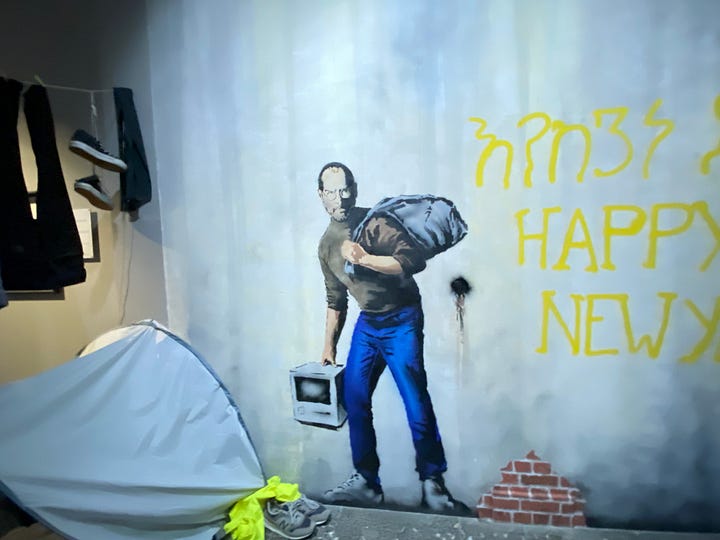
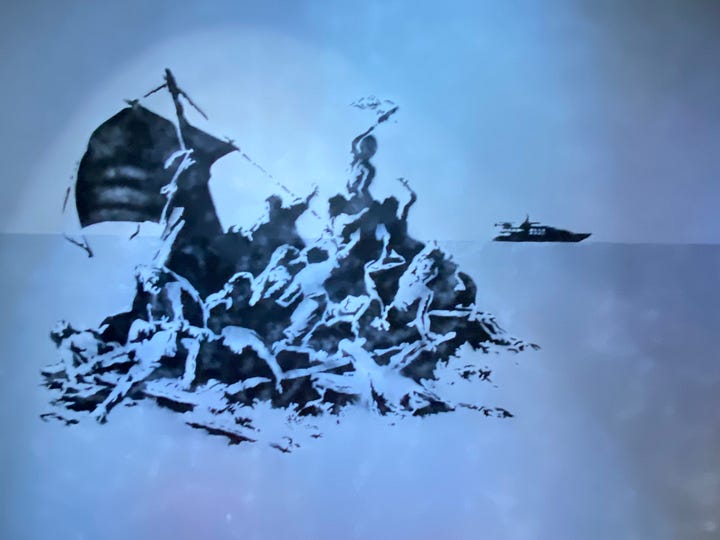

The Lighthouse - 2025
Six months after I was in Barcelona, Banksy released - Lighthouse - “I WANT TO BE WHAT YOU SAW IN ME.” Nobody knew where Lighthouse was when Banksy posted the image online May 29th, but avid followers discovered it on a quiet back street of Marseille, France within hours.
There is a lot of room for interpretation of the phrase, but the profound reverse shadow says a lot, as a simple street pole is depicted casting an elaborate shadow that emerges as an illuminated lighthouse. Now the city has to decide what to do next - view it as graffiti and clean the wall, preserve the art in place, maybe sell the image and have it structurally removed? Or will it be pirated? Certainly, part of a Banksy art installation is how it plays through, just like “Love Is In The Bin” … it will reflect on the values of those who step forward to deal with it, and the legacy that follows.
jhg - 2024





